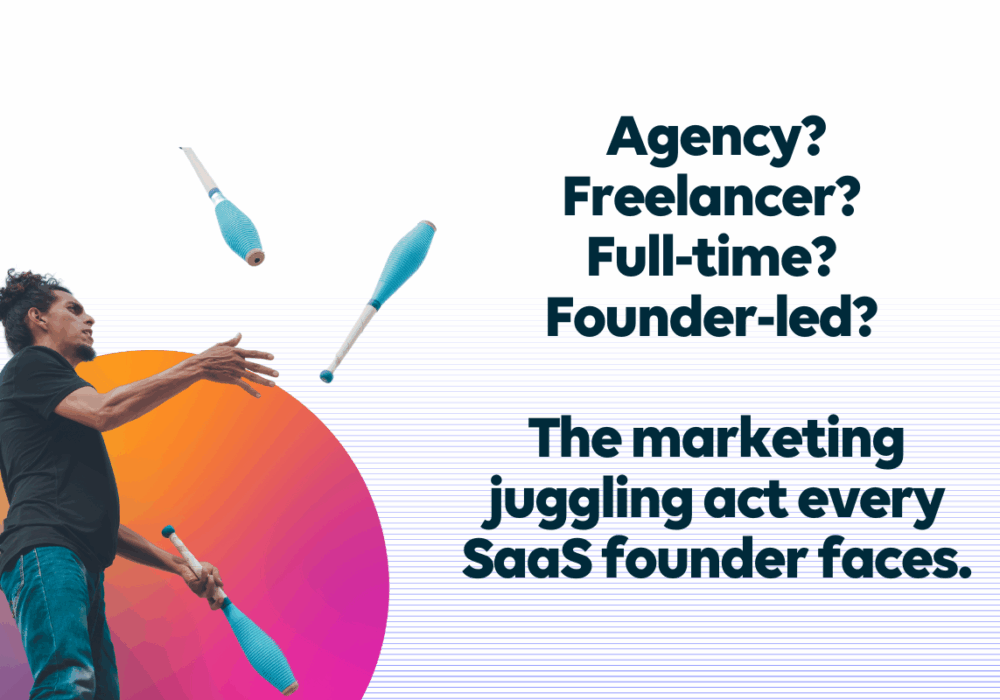How to measure and reduce churn rates
3rd May 2023

In the fast-moving and highly competitive world of SaaS, acquiring new customers is only the beginning. Next, you’ll be looking at convincing free account holders to become paying users, and working to retain them as long-term clients.
We all know that customer loyalty has a powerful effect on a business’s revenue. However, you also know that you’re never going to realistically keep every customer you gain. That’s why it’s important to ongoingly analyse your churn rate, gathering valuable data from the customers who do leave and using it to reduce ongoing churn.
What is Customer Churn?
Customer churn refers to the percentage of customers that end their use of a product over a set period of time. It is typically calculated by dividing the number of customers lost over a particular time period by the total number of customers who started using the product over that same time period.
A high churn rate can seriously impact the bottom line. The profitability of a business largely depends on the ability to retain existing customers, so it’s important to keep an eye on churn rates and take steps to keep them low.
Measuring Churn
Measuring churn is the first step towards identifying why customers might be falling by the wayside. Depending on your business model, this could mean quantifying cancelled subscriptions, uninstalled apps, or lapsed free trials. Whatever your product, you’ll need a set of metrics to monitor customers that are at risk of leaving. That way, clear benchmarks can be set for when a customer is about to churn.
On average, SaaS companies that focus on smaller businesses can expect a 3-5% monthly churn rate while those that serve enterprise-level businesses can expect a rate of just 1%. However, brand new SaaS companies can expect churn rates of up to 15% in their first twelve months on the market.
Analysing Churn
When evaluating churn, it’s essential to notice and examine patterns such as spikes or decreases in the loss of users. Confounding factors that might be behind such changes, like the time of year, adverse industry conditions, or promotional activity, also need to be considered. Look for correlations between new strategies or campaigns and their effects on churn to monitor which efforts are producing the right results.
The reasons why customers stop using a product can be personal and unique to each case, but they fall under a few umbrella categories:
Cost
If customers find a more cost-effective solution, or simply find they don’t have the budget for your product, this may lead to churn. This is why it’s important to establish value for money in your communications, so customers understand why their purchase or subscription is worth the cost.
Necessity
It’s worth considering whether your product is an essential part of your target audience’s stack, or a ‘nice to have’ option. When your customers need to cut costs, it’s the ‘nice to have’ subscriptions that get cut first. Think about how you can position your product as a more crucial solution, or adapt it to solve a specific pain point.
Fit
If your sales funnel is too wide at the top, you’re inevitably going to experience a lot of churn lower down as customers discover that they are not the right audience for your product. Resolving this calls for closer alignment between sales, marketing and customer service teams, so you can gain a better idea of who your ideal customer persona is and how to reach them.
UX
Bugs, glitches, and unfriendly user experience can all put users off a product, and lead them to search for alternative solutions. Listen carefully to feedback in reviews and on social media, and demonstrate that your team is working hard to fix issues as they arise.
Customer Service
It’s not just the product that can sour a customer’s experience – it’s the people. Prioritising customer service is key to keeping customers loyal: 94% of consumers who ranked a company’s CX as “very good” also stated that they are likely to buy from them again in the future.
Reducing Churn
Reducing churn is crucial to increasing your number of confidently committed users and subscribers, which in turn leads to more repeat business, more chances to upsell, less money spent on new acquisitions, better word-of-mouth marketing, and ultimately better profit margins. Here are a few tips for getting your churn rate down:
- Focus on attracting the right customers. Dedicate some time to creating customer personas, and target your messaging and paid advertising to these audience segments.
- Define a roadmap for new customers to ease their transition. This should align sales, marketing and UX teams in guiding new users through the product or service’s features and functionality, making it easy for them to stick around.
- Be proactive with communication. Be willing to show that you’re invested in helping customers get the most out of the product or service by checking in via personalised email campaigns, and offering them tips, tricks and invitations to workshops and webinars.
- Ask for feedback. Demonstrate that you are willing to see and hear your customers, and base your product’s development around their needs and issues. Use the data you gain from reviews and surveys as social proof, to guide your strategy going forward.
- Prioritise excellent customer service. If you’re appealing to small and medium businesses, make sure you have options for users to get in touch such as live chat, chatbots, social media messaging and email. For enterprise level accounts, consider dedicating specific customer success managers.
- Create a community around your customers. This will boost loyalty by adding value in the form of handy tips and social interaction. Start with a Facebook group, then branch out to Discord channels, Stack Overflow boards or even TikTok.
Lowering churn with Xander Marketing
A well-tailored and customer-centric marketing strategy can encourage existing customers to stick with your product, lowering churn rates, boosting your bottom line and increasing customer loyalty. If you’re not sure where to start, a specialised SaaS marketing agency could provide the professional support and direction you need to generate new leads and then retain them as your business grows.
Xander Marketing is the trusted outsourced partner helping SaaS businesses to create winning strategies that reduce churn and increase customer retention. If you’d like to learn more, request your free 30-minute consultation today and see what we can achieve together.





